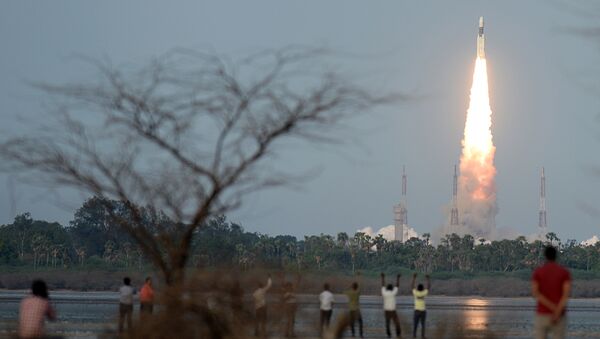New Delhi (Sputnik) — ISRO chief A.S. Kiran Kumar has said that the agency is hopeful of roping in private players to build a consortium that would primarily build launch vehicles. The focus of such consortium would be to capture the global market for satellitelaunching.
“We are trying to increase the number of launches. We are trying to look at a consortium, a joint venture entity, to build launch vehicles. It is a question of capacity building to capture a portion of the global market,” Kumar said.
“We are trying to increase the frequency of launches so that we can put sufficient infrastructure in place to meet our communication, remotes-sensing, earth observation and navigation requirements. Though we have 42 satellites in the orbit, we need more (satellites),” Kumar said.
ISRO is preparing for inter-planetary missions as well as launching India’s second lunar probe mission — Chandrayaan-2. ISRO has invited proposals from the scientific community on the possible programs that could be launched for its inter-planetary missions for Venus, Mars and some of the asteroids.
ISRO’s commercial arm, Antrix reportedly earned approximately $36 million in 2015-16 through commercial launch services, which is about 0.6 per cent of the global launch service market, according to Jitendra Singh, Minister of State for the Department of Space.






